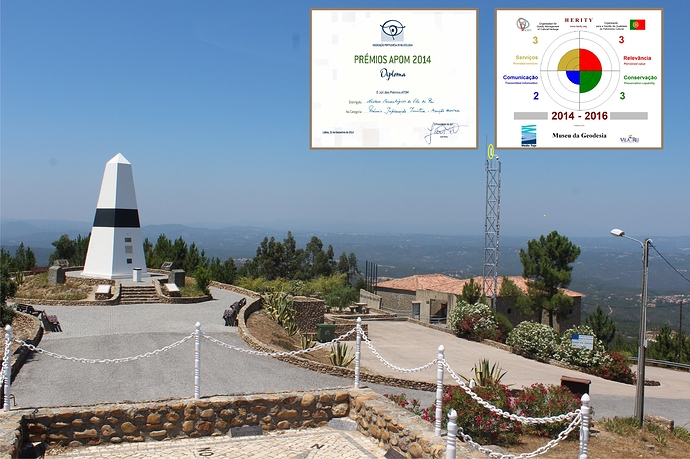Hi Guys,
I have a great Spot with 360º view with an elevation above ground of 1955 feet.
The site its located right in the midle of Portugal, Vila De Rei.
The antenna is located in the comunnications tower marked in yelow.
Despite i’m about 160kms away, i have remote acess to the site, i have a 4,5Km point-to-point wireless link conecting from my parents country house to the site.
The installation have a flightaware antenna and i’m using about 30meters cable (outdor satellite tv coaxial cable, not the best cable for it as i wanted … but i was not able to get a low noise cable in time to the instalation.)
Cable characteristics :
Coaxial cable. 6,9 mm diameter. Inner conductor CCS. 128 wires. Shielding 90dB/A class. Attenuation: 17,5dB (862 MHz) / 28,5dB (2150 MHz). PE black jacket.
75 Ohm
Attenuation
dB @ 950 MHz 18,3
dB @ 1350 MHz 22,5
datasheet :
So i’m Using a flightaware pro plus stick with a raspberry py 3 and in that raspberry i have Flightaware, flightradar24…
So far so good… now comes the tricky part that i need your advise…
As this is a great place to have a ADS-B site, i have two more dedicated receivers that were offered, a Plane Finder and a Xrange2.
At the moment i have installed a simple coaxial T, in this case a combined T to have 3 ways.
https://www.amazon.com/wlaniot-Splitter-Connector-Coaxial-Adapter/dp/B07892MVYG
This week i have tested a ordynary tv splitter as it shows in the image below.

Splitter characteristics :
3 outputs A class splitter. Passband: 5-2400 MHz. Insertion loss: 7dB (862 MHz) / 9,5dB (2300 MHz). All ports DC pass.
datasheet :
But with this set the messages decreased you can see in the daily chart
So my questions and doubts:
I) what kind of spliter should i use in this 3 way cenarium i have read good reviews about minicircuits power spliters
whound i use a spliter like this one : minicircuits ZB4PD1-2000+
https://ww2.minicircuits.com/pdfs/ZB4PD1-2000+.pdf
II) As the cable have a big lenght shound i use a LNA near the antenna ?
SPECIFICATIONS
Passband
1090 +/- 15 MHz
Frequency … Gain
700 MHz … 7 dB
800 MHz … 5 dB
900 MHz … 0 dB
1090 MHz … 30 dB
1150 MHz … -20 dB
1200 MHz … -7 dB
NOTES
The filter uses SMA-F connectors.
Max RF Input = -15 dBm
More questions:
Adding a LNA near the antenna might be saturating the signal? … As the flightware pro stick plus have a amplifier / filter also.??
Splitting the signal with the flightware amplifiing the signal might affect the oter receivers?
What do you thing might be the best solution to share the antenna with the 3 receivers ( Raspberry with Flightware pro sick plus + Planefinder + radarbox24 )
Thanks





